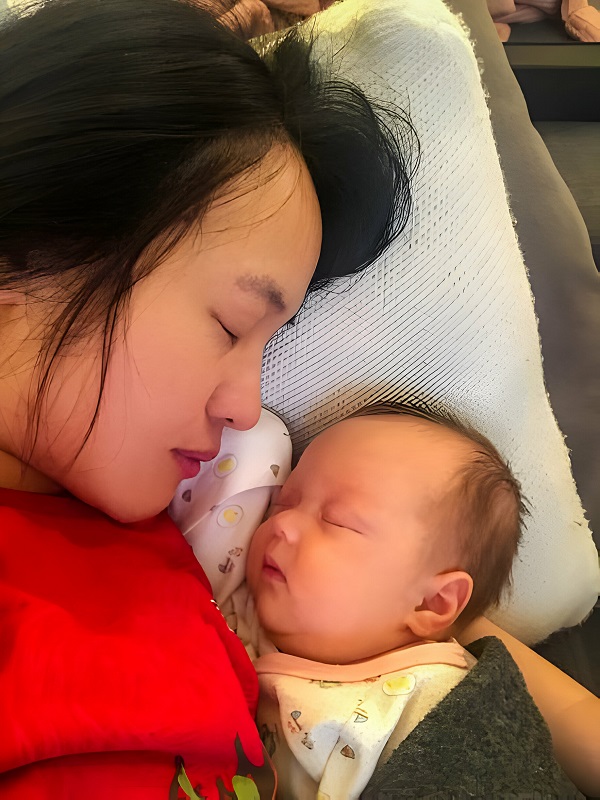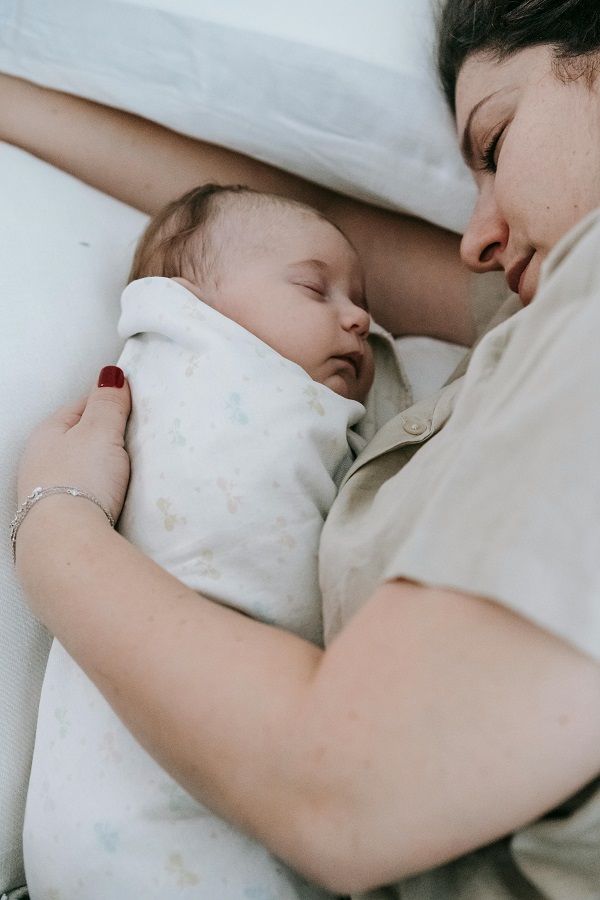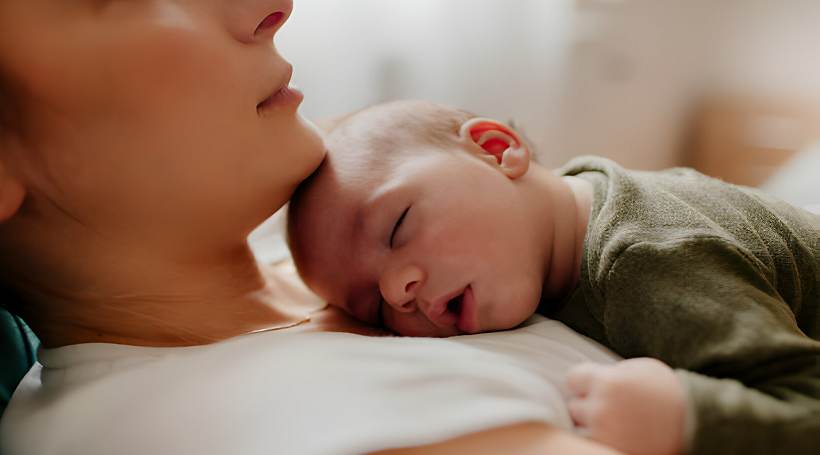Last Updated on January 1, 2025
Most babies grow out of contact naps between the ages of 4 to 6 months. This transition period is when they start developing a more predictable sleep pattern and can begin to self-soothe, making it easier for them to nap without being held.
The journey of parenting is filled with numerous milestones and developmental transitions, one of which involves your baby’s nap habits. Contact napping, where a baby sleeps while being held or in close contact with a parent, is a common practice that fosters bonding and provides comfort to newborns. However, as babies grow, their sleep patterns evolve, leading many parents to wonder when their little ones will start to nap independently. We write here the topic of contact naps, exploring when babies typically grow out of them, factors that influence this transition, and tips for making the process smoother for both babies and parents.

Read More – Transitioning From 3 Naps To 2: Signs Your Baby Is Ready
What is Contact Naps?
In the early weeks and months of a baby’s life, their sleep patterns are quite irregular. Newborns have not yet developed their circadian rhythm, the internal process that regulates the sleep-wake cycle, making contact naps a soothing solution for many families. During these moments of closeness, babies feel the warmth, hear the heartbeat, and sense the breathing patterns of their parents, which can mimic the comforting environment of the womb.
The Transition Phase
The transition away from contact naps typically begins around the age of 4 to 6 months. This period is marked by significant developmental milestones that influence a baby’s sleep habits. By this age, most babies:
- Develop a more regulated circadian rhythm, which helps them distinguish between day and night, leading to longer stretches of sleep during nighttime and more predictable naps during the day.
- Start to exhibit signs of self-soothing, such as sucking on their fingers or a pacifier, which can help them fall asleep on their own.
- Become more aware of their surroundings, which can make sleeping in a quiet, undisturbed space more conducive to uninterrupted naps.
It’s important to note that the transition away from contact naps does not happen overnight and varies greatly from one baby to another. Some babies may show readiness to nap independently earlier, while others may prefer the comfort and security of contact naps well beyond the 6-month mark.
Factors Influencing the Transition
Several factors can influence when and how smoothly a baby transitions from contact naps to independent naps:
- Parental readiness: Parents’ willingness to encourage independent naps can play a significant role. Gradually introducing the baby to napping in a crib or bassinet can help ease the transition.
- Consistency in routines: Establishing a predictable nap routine can provide the baby with cues that it’s time to sleep, making it easier for them to adapt to napping independently.
- Sleep environment: A comfortable, quiet, and dark sleep environment can significantly improve a baby’s ability to nap independently. Using white noise machines or blackout curtains can also be beneficial.
- Baby’s temperament: Each baby’s unique temperament affects how they respond to changes in their sleeping habits. Some may adjust quickly, while others may need more time and patience from their caregivers.
Read More – When Do Babies Drop To 2 Naps?
Tips for Easing the Transition
Transitioning from contact naps to independent naps can be challenging for both babies and parents. Here are some tips to make the process smoother:
- Gradual adjustment: Start by placing the baby in their crib or bassinet for short periods while they’re drowsy but not fully asleep. This can help them get used to the new sleeping environment.
- Comfort items: Introducing a small, baby-safe comfort item, like a soft blanket or a stuffed animal, can provide a sense of security during naps.
- Stay close: Initially, stay in the room or nearby so the baby can still sense your presence. Gradually increase the distance as they become more comfortable sleeping independently.
- Be patient and flexible: Some days will be easier than others. It’s important to remain patient and flexible, adjusting strategies as needed based on the baby’s responses and needs.

Read More – Does A Surrogate Mother Share Blood With The Baby?
FAQs
When Do Babies Grow Out Of Contact Naps?
Babies typically grow out of contact naps between 4 to 6 months. This change coincides with the development of a more predictable sleep pattern and the ability to self-soothe, which makes independent napping more feasible.
When Should Babies Stop Contact Napping?
There’s no set age for babies to stop contact napping, as each child’s development varies. However, many parents begin transitioning their babies towards independent napping around 4 to 6 months, as their sleep cycles become more regular.
Do Babies Naturally Outgrow Contact Naps?
Yes, babies naturally outgrow contact naps as they mature. By around 4 to 6 months, as babies develop the ability to self-soothe and recognize sleep cues, they start showing readiness for independent napping without the need for constant physical contact.
How Do I Break My Baby From Contact Naps?
To break your baby from contact naps, start by introducing a consistent nap routine and sleep environment. Gradually decrease the amount of time you hold them for naps, using techniques like placing them down drowsy but awake, to encourage self-soothing and independent sleep.
How Do I Get My Baby To Nap Without Being Held?
Encourage your baby to nap without being held by establishing a soothing pre-nap routine, creating a calm and comfortable sleep environment, and gradually teaching them to self-soothe. Consistency and patience are key, as babies learn to associate these cues with sleep time and become more independent nappers.
Conclusion
The transition from contact naps to independent naps is a significant milestone in a baby’s development. While the general timeframe for this transition is around 4 to 6 months, it’s essential to remember that every baby is unique. Understanding the factors that influence this transition and adopting a flexible, patient approach can help ensure a smoother process for both babies and their parents. As always, if you have concerns about your baby’s sleep habits or their development, consulting with a pediatrician can provide personalized guidance and support.

